 Let me start this article by saying that the first person this summer that complains about it being too hot, should be tarred, feathered and drug through the streets...... I don't know what we did to tick Mother Nature off but at least all our little baby salmon are making it to the ocean at record pace. If there's food out there for them, we could be in for some great fishing in the coming ye2017ars.
Let me start this article by saying that the first person this summer that complains about it being too hot, should be tarred, feathered and drug through the streets...... I don't know what we did to tick Mother Nature off but at least all our little baby salmon are making it to the ocean at record pace. If there's food out there for them, we could be in for some great fishing in the coming ye2017ars.
This 2017 main stem Columbia Spring Chinook Fishery is going to go down as one of the most challenging, temperamental, and toughest fisheries we've had to experience in a while. Going out and producing fish day to day with the constantly changing conditions, water levels, and turbidity made even the most seasoned spring chinook veterans scratch their heads on some days. The past 3 years we've gotten to enjoy showing up at daylight, running out to our favorite trolls, and whacking fish through whatever stage the tide happened to be in, all while enjoying some decent warm spring weather. This season being the stark contrast to the previous 3 years, I'll never wish for rain again!
The season started off with a very few fish being caught right around the Pacific Northwest Sportsman's Show. Usually there was a fish or 2 caught before but either anglers didn't want to collect the famous internet prize on some local discussion boards or they just weren't caught. Nevertheless none appeared till shortly after the show. From there we started getting wetter and wetter with building snow packs and constant fronts moving through the Northwest. March came and there was a very small window of opportunity and while I decided to sit on the sidelines and catch steelhead, there were some fish caught and things were finally starting to look up in the Columbia. Long days resulted in very, very few fish but at least it was something for the guys willing to sit long hours on anchor. Looking back I kinda wished I would have tried for the elusive springers during this time frame not knowing it would have been the only chance we'd get for weeks.

Then the skies really opened up and we received the wettest March on record. The Columbia and surrounding tributaries rose to flood stage and stayed there for weeks. Fishing was darn near impossible with the turbidity and the high flows. Bonneville and the dams upriver started spilling at a huge rate which just stirred mud and debris up even more. We would hear of a bite here, and a rumored fish there, but essentially the river was shut down for about 3 weeks.
To pass the time we prepped for the coming season, talked strategies and went back to the techniques and tricks we used in previous high water years in hopes that we would begin picking up fish soon. Everyone watched the turbidity levels on the Willamette, Columbia and local tributaries anxiously and slowly, but surely, they came down. Local tributaries and the Willamette actually cleared at a faster rate than the Big C and fish were in there and some were caught. Around that time the WDFW and ODFW started their test fishing and the results showed fish in the system. The nets they would use actually work better in muddier conditions so at least we knew we would be in business when the water finally cleared.
Our season was supposed to be set to fish through April 6th but a meeting in the previous week felt pretty confident that we wouldn't get anywhere close to our 6,900 fish destined for above Bonneville and they pushed the fishing through the 10th. I think at the time of the meeting the states figured we were at less than 100 fish kept so far. It's really tough for the WDFW and ODFW to manage this fishery. On a normal year the fish are caught at a very slow pace till the main push of fish arrive, theoretically making the last day of the season the best. We go from catching tens of fish a day, to hundreds, and on the final few days, to thousands.... With only 6,900 fish to go, at a thousand a day, it goes extremely fast.
April arrived and fishing was still slow till about the 3rd or 4th when turbidity levels got down to a reasonable level. I started my season actually fishing the local tribs and the Willamette which had slightly better water. But by the time the 5th came around we finally were starting to get some decent action with Killerfish sitting on anchor in less than 10 feet of water. One thing nice about the first week was when we got bit, it turned out to be decent sized fish. We were targeting the haunts and seam lines that we would have normally fished during the spring run off in May and June in the previous years. KF-15 plugs in Rotten Banana and Christine seemed to do the trick in the still dirty water.
Switching It Up:

One thing that has always been a problem with fishing a plug for salmon is your bite to landing ratio. Plugs are notorious for shaking out of fish and with hundreds of ways to rig hooks, set your drags, and technique of when to pick up the rod and set the hook, its obvious people still look for the magic combination. When the water is cooler and the fish are more apt to bite a bait, I prefer to run it on anchor just for the hookup to landing ratio. The salmon seem to latch on a bit longer to the bait instead of just swiping at it out of aggression. This leads to more time for a hook to find it's mark. Now with that said, when the fishing finally started picking up and we were anchored, I was having issues with loosing fish about half way to the boat. After a couple miserable days of low percentage landing ratios, I went back to the drawing board and decided to try the No Escape Hooks from Owner. Considering how much of a difference a "drop shot" style hook made for Kokanee fishing, these hooks looked identical to that style except barbless and with strong wire to avoid bending out.
After just a few days of considerably improved ratios, needless to say I'm a fan. The 2/0 and 3/0 work well and are a little lighter than some of the other sickle style in similar sizes, which allows a better bait presentation. We would miss some bites, but if we got a hook into them, it was over. The last day we lost a beautiful 15 pound smoothie at the net, but finished 5 for 5 to save the day. It will be interesting to see how these hooks perform for Steelhead and big Fall Kings.
On Fishing Addicts we always talk about being diversified in what you do, and to always think outside the box. I used to be a very closed minded individual when it came to my fishing but after the last 3 to 4 years with new techniques taking over the rivers, you have to be willing to try new things or drag old techniques up out of the box. There's no arguments that some new techniques have changed everything we do. 360 Flashers, Twitching, and Bobber-dogging to name a few, really show that sometimes, there really is something out there that will produce considerably over something tried and true. Conditions change our techniques, the last week of fishing that showed more than ever.
The Final Week:
Thursday and Friday the Columbia was on a drop, and it seemed like you could do no wrong. Thursday the water was still a bit swift, we backtrolled bobber and bait and had a blast picking on the schools of fish that would get hooked here and there. If we saw people dropping off anchor on the shallow side of the bar, our next pass we would move a few hundred yards above them and it seemed that it would result in a hookup for us. Little batches of fish cruising through kept it interesting and the whole river did well.
Friday we had all the intentions in the world to back troll but with the decreasing flows we quickly realized that we couldn't work the water like I wanted to. The slower flow wouldn't hold the divers down and after the first couple hours we noticed some down stream trolling action and we joined the crowd doing that. It was an awesome bite in about 15 feet of water till the sun came up and the fish stopped biting. Or so it seemed... After a couple exploratory passes through areas we've done well before downstream trolling, we decided to troll out in 30 ft and we absolutely crushed them.

About every short pass we'd hookup or get a chance at them. We quickly got our fish on a bite that was reminiscent to last years entire fishery. Deep trolling small baits, really slow with sunny skies, Game... Over. As I put the boat away for the evening and prepped for the next day I was already planning my early afternoon nap once our limits were whacked...
Saturday morning I awoke to a buddy texting me a pic of the Vancouver gauge and like something out of a nightmare, we were on a hard rise with a couple more feet of water coming down the river. Even pulling into the boat ramp you could see the water had rose considerably over night. We ventured out and after a couple inside downstream passes, we knew we'd be right back to back trolling. Our first pass back trolling we got into one and landed a nice hatchery fish. People took notice and it didn't take long to see about 25 boats back trolling too, but honestly I would have done the same. We land another big wild and on the tide change we slipped down river in hopes of replicating the day before but it didn't happen.
Sunday we start our back trolling routine and lose a really nice fish at the net but hardly see anything else. Around 11 a buddy calls and says that they just boated one in 10 feet and the bankies had a couple hits. I ask if there is room in between them and he says, "plenty", so off we go. Upon anchoring with bobber and bait in the soft seam, we no sooner settle in and immediately hook up on a nice keeper. 30 min later we have 2 others, and within a couple hours we land 5... There was very little going on until the tide flipped fully and a couple other boats got a fish a piece but we headed in without seeing much. The fish had moved way inside which was a far cry from them swimming in 30 feet 2 days before.
Perception is Everything:
 During the season people constantly ask "What depth?" or "Trolling or Anchored?". These types of questions are completely irrelevant unless you're fishing similar areas or on the similar tide. Even when the Columbia was at 17 feet and raging, there were still spots behind islands and in sloughs that would produce a fish on the troll. An angler in the lower river trolling on a incoming tide probably has a better chance at catching one trolling as the tide will have a bigger effect and possibly slow the water more than someone at Vancouver.... What I'm getting at is, having a tool bag full of techniques and options will add another element to your fishing, when one technique can't be used, another will work. This season challenged that as in just a couple short days, where I fished, we moved from plugs on anchor, to trolling deep water, to back trolling, and then back on anchor with bobbers and bait swinging in a slow seam.
During the season people constantly ask "What depth?" or "Trolling or Anchored?". These types of questions are completely irrelevant unless you're fishing similar areas or on the similar tide. Even when the Columbia was at 17 feet and raging, there were still spots behind islands and in sloughs that would produce a fish on the troll. An angler in the lower river trolling on a incoming tide probably has a better chance at catching one trolling as the tide will have a bigger effect and possibly slow the water more than someone at Vancouver.... What I'm getting at is, having a tool bag full of techniques and options will add another element to your fishing, when one technique can't be used, another will work. This season challenged that as in just a couple short days, where I fished, we moved from plugs on anchor, to trolling deep water, to back trolling, and then back on anchor with bobbers and bait swinging in a slow seam.
It doesn't sound like we will be seeing any salmon fishing on the Big C anytime soon as meetings from the WDFW and ODFW were cancelled though mid May. Long term forecasts of Bonneville flows show that if we do get some time back in the river, we will be seeing more of the same. Make sure you have a good selection of jet divers, leads, baits, and a willingness to change your Plan A at a moments notice.
 Cameron Black
Cameron Black
Gone Catchin' Guide Service
Fishing Addicts Northwest
Email: GoneCatchin@Gmail.com

 Let me start this article by saying that the first person this summer that complains about it being too hot, should be tarred, feathered and drug through the streets...... I don't know what we did to tick Mother Nature off but at least all our little baby salmon are making it to the ocean at record pace. If there's food out there for them, we could be in for some great fishing in the coming ye2017ars.
Let me start this article by saying that the first person this summer that complains about it being too hot, should be tarred, feathered and drug through the streets...... I don't know what we did to tick Mother Nature off but at least all our little baby salmon are making it to the ocean at record pace. If there's food out there for them, we could be in for some great fishing in the coming ye2017ars.
 One thing that has always been a problem with fishing a plug for salmon is your bite to landing ratio. Plugs are notorious for shaking out of fish and with hundreds of ways to rig hooks, set your drags, and technique of when to pick up the rod and set the hook, its obvious people still look for the magic combination. When the water is cooler and the fish are more apt to bite a bait, I prefer to run it on anchor just for the hookup to landing ratio. The salmon seem to latch on a bit longer to the bait instead of just swiping at it out of aggression. This leads to more time for a hook to find it's mark. Now with that said, when the fishing finally started picking up and we were anchored, I was having issues with loosing fish about half way to the boat. After a couple miserable days of low percentage landing ratios, I went back to the drawing board and decided to try the No Escape Hooks from Owner. Considering how much of a difference a "drop shot" style hook made for Kokanee fishing, these hooks looked identical to that style except barbless and with strong wire to avoid bending out.
One thing that has always been a problem with fishing a plug for salmon is your bite to landing ratio. Plugs are notorious for shaking out of fish and with hundreds of ways to rig hooks, set your drags, and technique of when to pick up the rod and set the hook, its obvious people still look for the magic combination. When the water is cooler and the fish are more apt to bite a bait, I prefer to run it on anchor just for the hookup to landing ratio. The salmon seem to latch on a bit longer to the bait instead of just swiping at it out of aggression. This leads to more time for a hook to find it's mark. Now with that said, when the fishing finally started picking up and we were anchored, I was having issues with loosing fish about half way to the boat. After a couple miserable days of low percentage landing ratios, I went back to the drawing board and decided to try the No Escape Hooks from Owner. Considering how much of a difference a "drop shot" style hook made for Kokanee fishing, these hooks looked identical to that style except barbless and with strong wire to avoid bending out. 
 During the season people constantly ask "What depth?" or "Trolling or Anchored?". These types of questions are completely irrelevant unless you're fishing similar areas or on the similar tide. Even when the Columbia was at 17 feet and raging, there were still spots behind islands and in sloughs that would produce a fish on the troll. An angler in the lower river trolling on a incoming tide probably has a better chance at catching one trolling as the tide will have a bigger effect and possibly slow the water more than someone at Vancouver.... What I'm getting at is, having a tool bag full of techniques and options will add another element to your fishing, when one technique can't be used, another will work. This season challenged that as in just a couple short days, where I fished, we moved from plugs on anchor, to trolling deep water, to back trolling, and then back on anchor with bobbers and bait swinging in a slow seam.
During the season people constantly ask "What depth?" or "Trolling or Anchored?". These types of questions are completely irrelevant unless you're fishing similar areas or on the similar tide. Even when the Columbia was at 17 feet and raging, there were still spots behind islands and in sloughs that would produce a fish on the troll. An angler in the lower river trolling on a incoming tide probably has a better chance at catching one trolling as the tide will have a bigger effect and possibly slow the water more than someone at Vancouver.... What I'm getting at is, having a tool bag full of techniques and options will add another element to your fishing, when one technique can't be used, another will work. This season challenged that as in just a couple short days, where I fished, we moved from plugs on anchor, to trolling deep water, to back trolling, and then back on anchor with bobbers and bait swinging in a slow seam.  Cameron Black
Cameron Black 

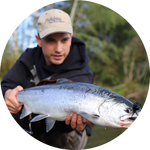

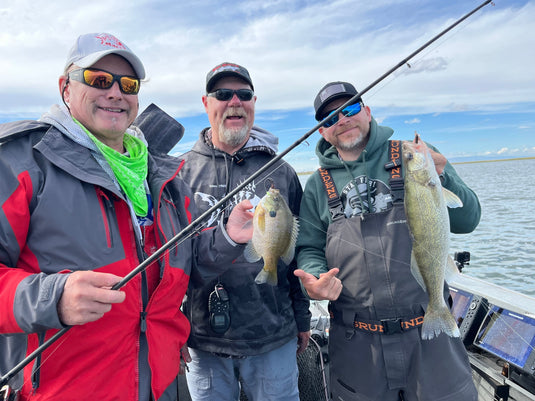
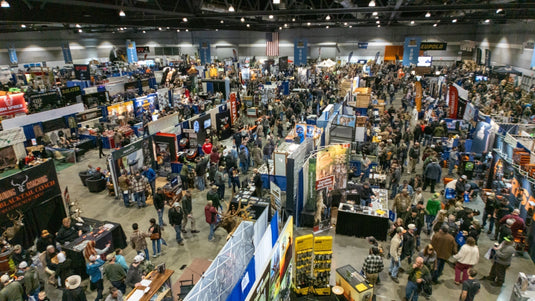
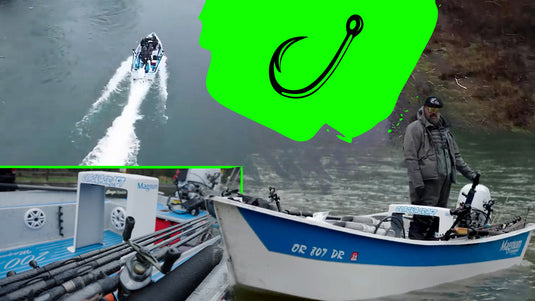

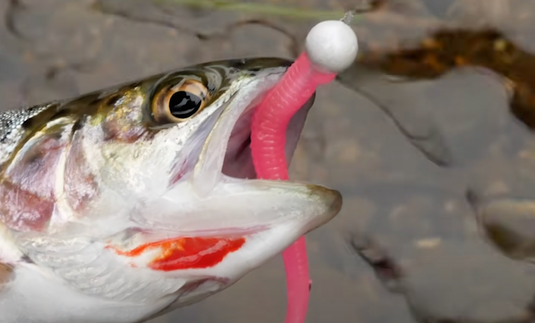
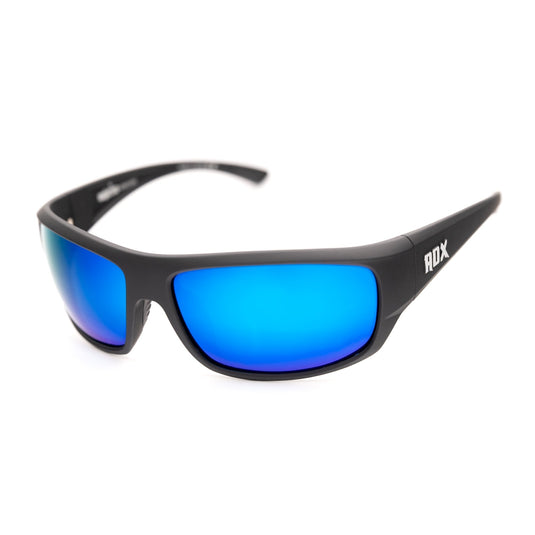
About sums it up, nice write.